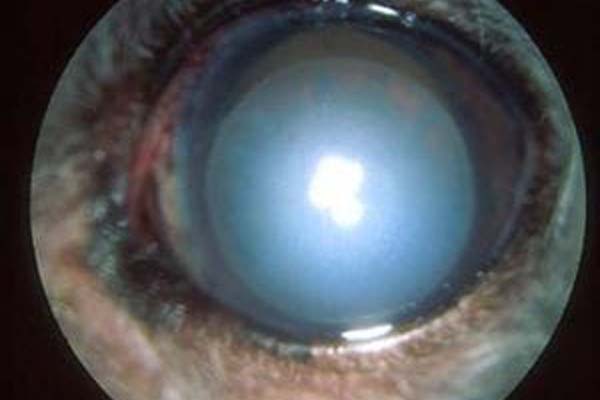Pet Lens Luxation Spring, TX
Hereditary fragility or degeneration of the lens zonules is the cause of primary lens luxation.

What is a lens luxation?
Lens luxation is the instability of the lens. The lens is suspended behind the pupil with small fibers termed zonules. The breakdown of these zonules results in instability and possible movement of the lens within the eye. The types of luxations include:
- Subluxation – a partial, not complete, breakdown of the zonules resulting in a lens still in its proper location but loose.
- Posterior luxation – a complete breakdown of the zonules with the lens located behind the iris.
- Anterior luxation – a complete breakdown of the zonules with the movement of the lens in front of the iris. This is considered an emergency.
What causes lens luxation?
The most common cause of lens luxation is genetic. Many breeds, and even mixed breeds, have been found to have genetic lens luxation. The breeds with the highest incidence of cataracts include Terriers and mixed Terriers, Miniature Poodles, American Cocker Spaniels, Border Collies, Shar Pei, German Shepherds, and Blue Heelers. Other causes of lens luxation include intraocular inflammation, advanced cataracts, senile changes, glaucoma, and trauma.
Why are lens luxations important?
Unfortunately, lens luxation has highly associated with the development of glaucoma, a painful and blinding condition of the eye. Anterior lens luxations are the most urgent, leading to glaucoma in 73% of dog eyes, thus considered an emergency. However, even posterior luxation and subluxation can lead to glaucoma.
What is the treatment for lens luxation?
The treatment for lens luxation varies with the type of luxation. Anterior lens luxation cause significant disruption of the fluid within the eye resulting in significant increases in intraocular pressure, a very painful and potentially blinding condition. At North Houston Veterinary Ophthalmology, the only way to relieve the situation is to surgically remove the lens through a large corneal incision. An anterior lens luxation is considered an emergency and should be treated immediately.
Posterior luxated and subluxated lenses can be treated more conservatively with topical medications to constrict the pupil and decrease intraocular inflammation. However, these eyes must still be monitored closely for the development of glaucoma.
